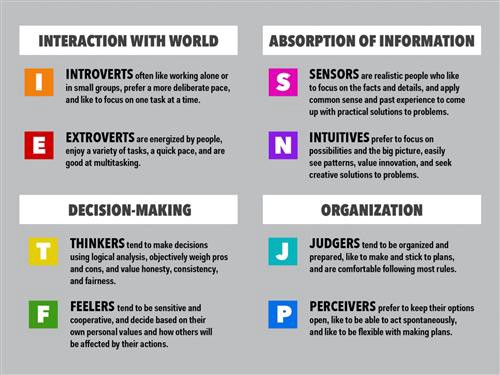MBTI as a Team Building Tool
Using MBTI during Team Building
We talk a lot about tools for use in team building.
There are hundreds, if not thousands, of tools available and used in ‘team building’ situations.
Whether it is a true ‘team building’ or not is not relevant here as Myers Briggs is actually an individual tool first.
However, a short discussion of tools are necessary before we can talk specifically about Myers Briggs.
Think of a shovel — you bring in a shovel and train the participants to use it. Then ask them to dig a hole. A percentage of them will take the shovel and begin to dig. Another percentage will use the wrong end of the shovel and use it that way. And yet another percentage will throw the shovel aside and begin digging with their hands.
It does not matter how great the tool is, many people will simply not use it. It is too difficult to learn yet another new tool. Much easier to just do things the way I have always done it. I fall victim to the very same problem quite frequently.
Team building tools, like Myers Briggs, are shovels.
I like the Myers Briggs. However, I have found several common themes:
- In a ‘team’ setting, I have found it is simply too much information. Myers Briggs is incredibly deep, to it’s detriment. I cannot tell you how many times have come into a group setting after they have just taken the assessment and all they can remember is the first of four letters, “I am an ‘E’…. something”.While some of that can be attributed to the ‘shovel’ problem, it also is an indicator that the tool is not simple enough to be digested in an 8-hour ‘team building’ session (or less). And unfortunately, that is how it is used much of the time.
- There are problems with face validity of the tool. People don’t like to think they are so simple that they fit into one of sixteen types. So there is resistance that must be overcome and that takes away from valuable time.
- You must really know the MBTI on an individual basis before you can use it as a ‘team’ tool. Since the learning is difficult as mentioned above, using it in any kind of team setting is difficult to impossible.
So, overall, using the shovel and digging a hole metaphor, the MBTI is not the right tool. It is more like a roto-tiller — high-powered and very useful, but not in a shallow ‘team building’ session that only lasts a single day or even an executive retreat. It churns up too much with no time to ‘smooth’ out the surface and generally leaves more questions than answers. What executive has the time for that?
A confused mind says ‘no’, and so, the misunderstood tool is simply not used.
We find it can be useful in smaller executive teams that we work with frequently both as a team and individual coach. The nuances can be fleshed out and the potential learning can be much deeper than many other tools available, if the recipient is willing to be introspective.
Use this tool, but just make sure you are not really looking for a rake instead of a shovel.
Activities to Deepen MBTI Learning
HOWEVER, many workshop leaders spend valuable time on MBTI and need to ‘practice’ with the group, giving them valuable experience of how MBTI can help you be better as both individual and team.
We field question after question that are all variations of:
“What is a GREAT MBTI team building activity?“
This is not the right question.
The right question is:
“How do I use this activity (any activity) to best represent how MBTI works?“
The easiest representation – what we see first – of a new mental model like Myers Briggs is in our communication. Luckily, every activity requires some kind of communication!
During the debrief, there is the natural discussion of:
-
- What? – experience/activity/event & what happened during the activity
- So what? – interpretation of what happened and what is important
- Now what? – what can we take from this and be better moving forward?
MBTI can be brought up in all three stages of the debrief:

-
- What? – (after some basic intro ‘what’ questions), See the image to the right.
- “Where did you see <insert here> showing up in the activity?“
- “How did you make decisions? “
- “How did you organize?“
- “
- So what? – interpretation of what happened and what is important
- “Why is it important to have I’s & E’s,
- … T’s & F’s,
- … J’s & Ps,
- … S’s & I’s?”
- It is important to only ask a single specific question here and not all of those options at one time, in one question.
- Also, don’t ask the same exact question from each one. Change up your questions.
- “What value did each of these bring to the overall dynamic of the activity?” “How did it impact the team dynamic?“
- Now what? – what can we take from this and be better moving forward?
- “How can we use what we have learned about MBTI and our group dynamics to continually be better moving forward?“
- “What is one way you can use what you know about yourself through MBTI to create a better team?“
- What? – (after some basic intro ‘what’ questions), See the image to the right.
These are all just sample questions that will help you dig into and use MBTI in the group, letting them ‘practice’ what they have learned and recognize the value of knowing yourself and your team members better.
